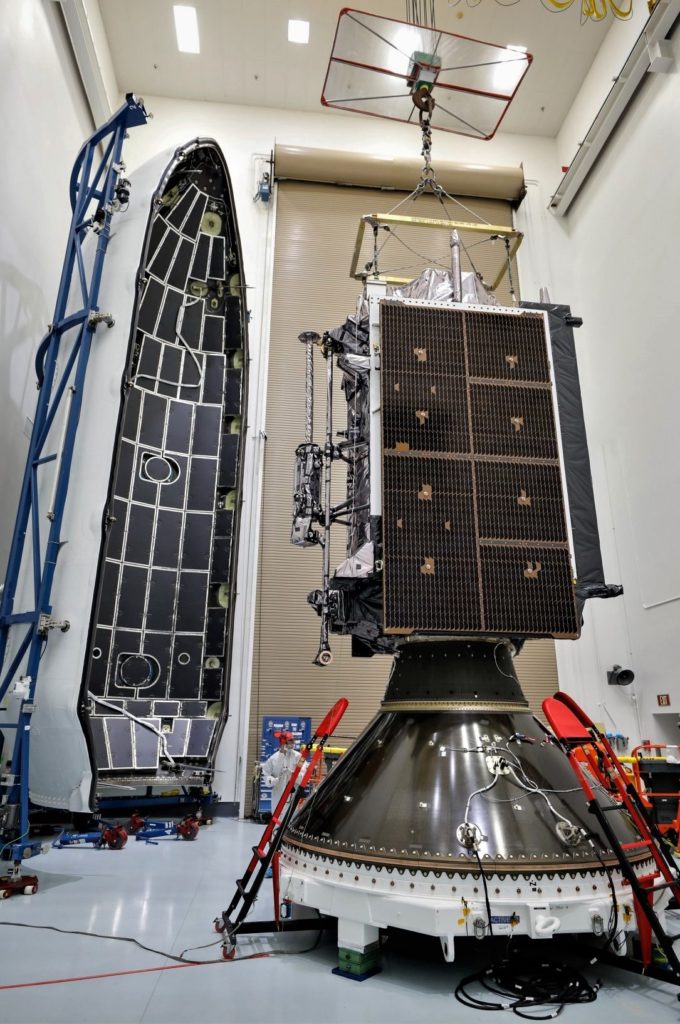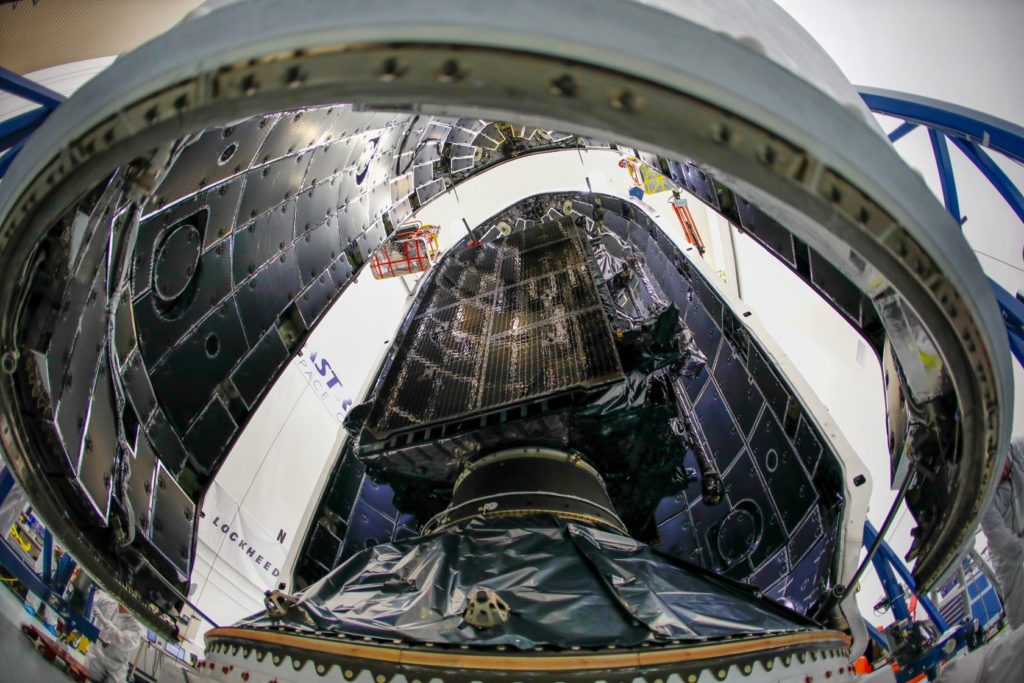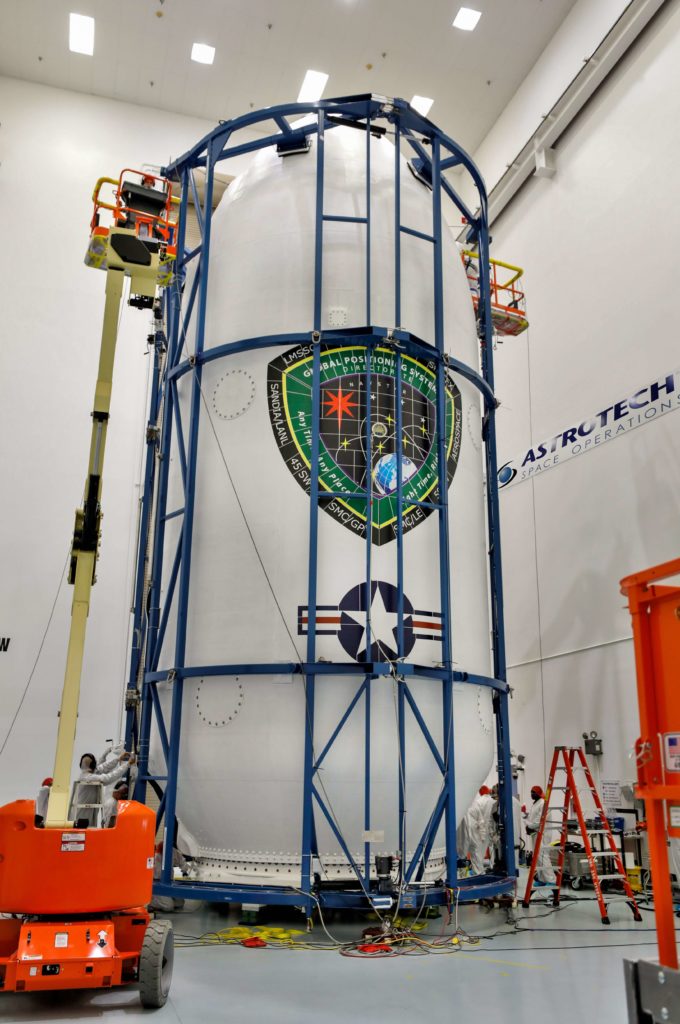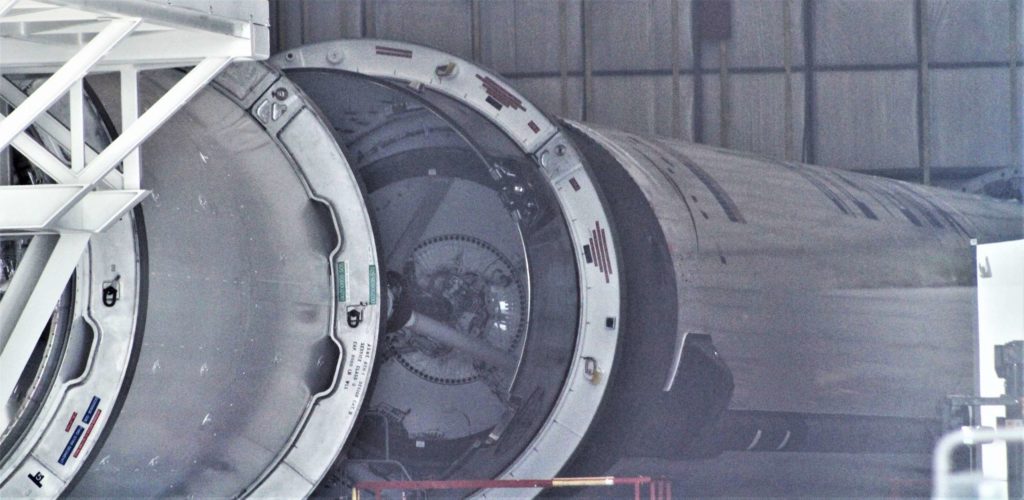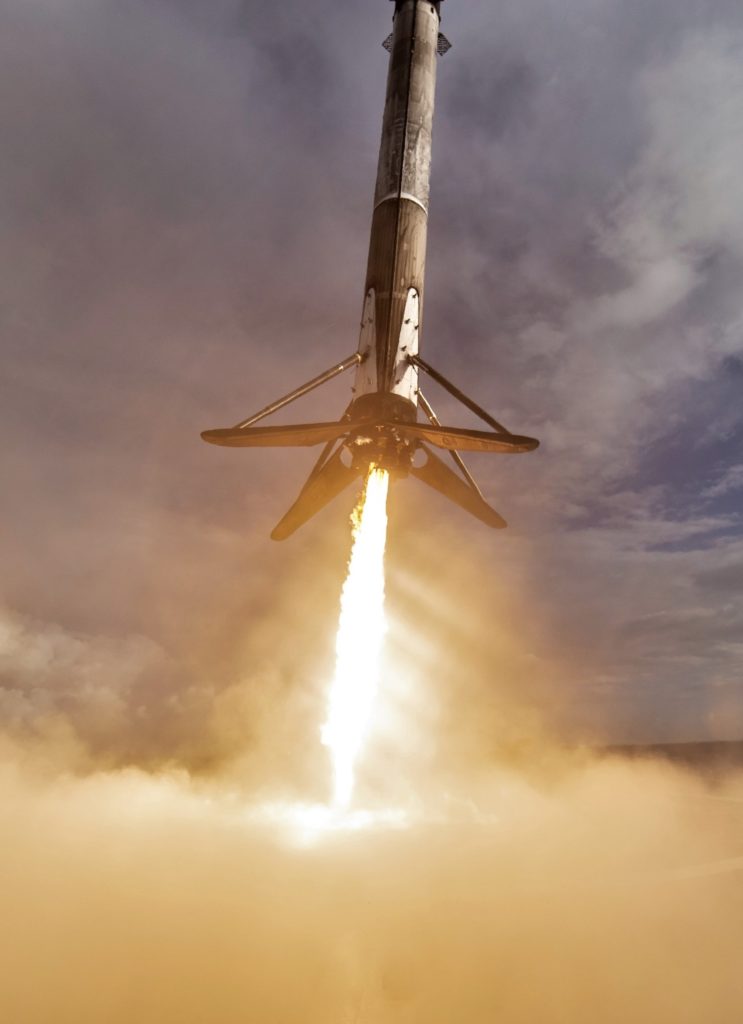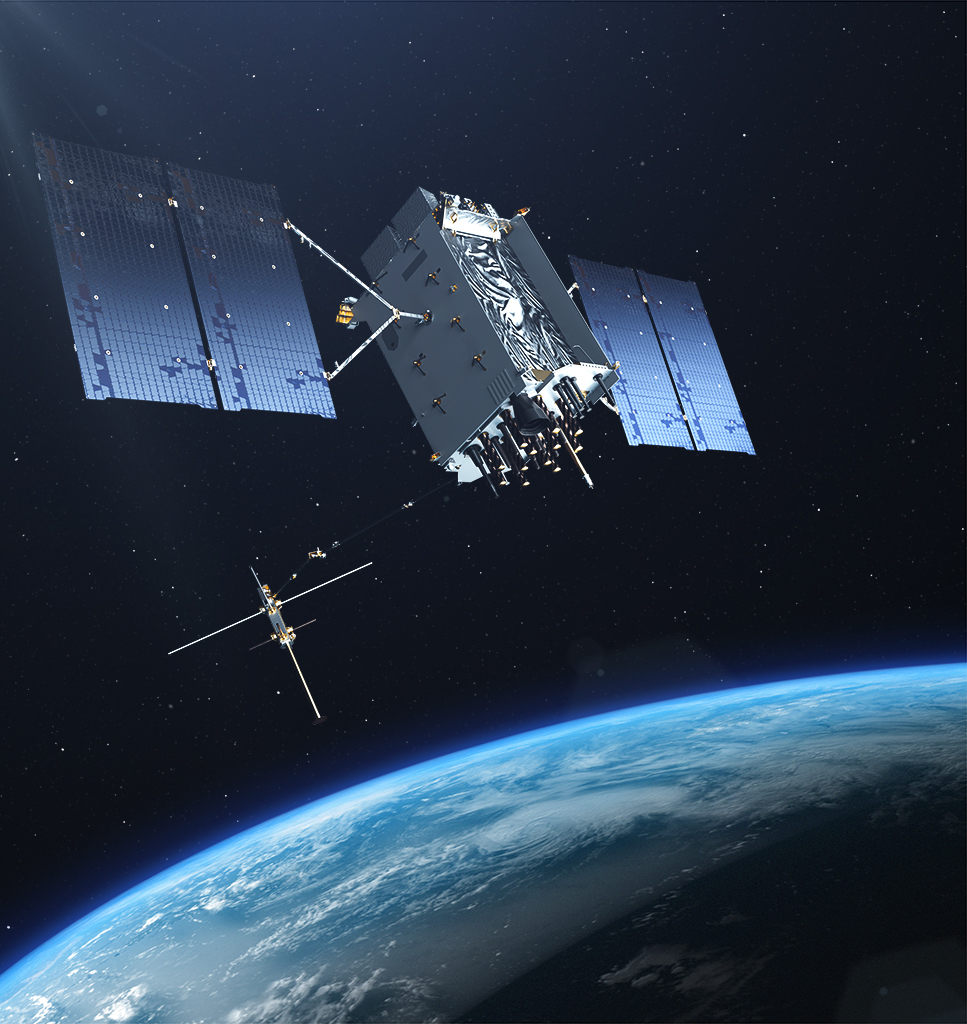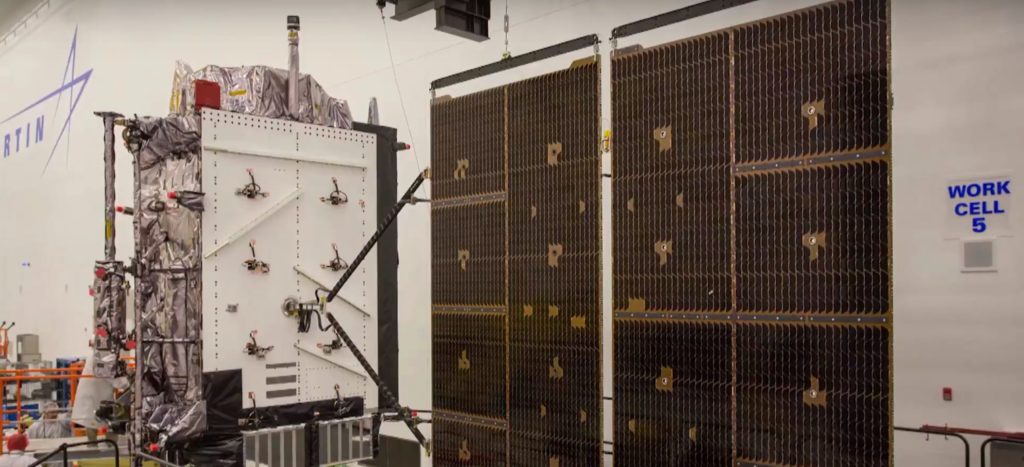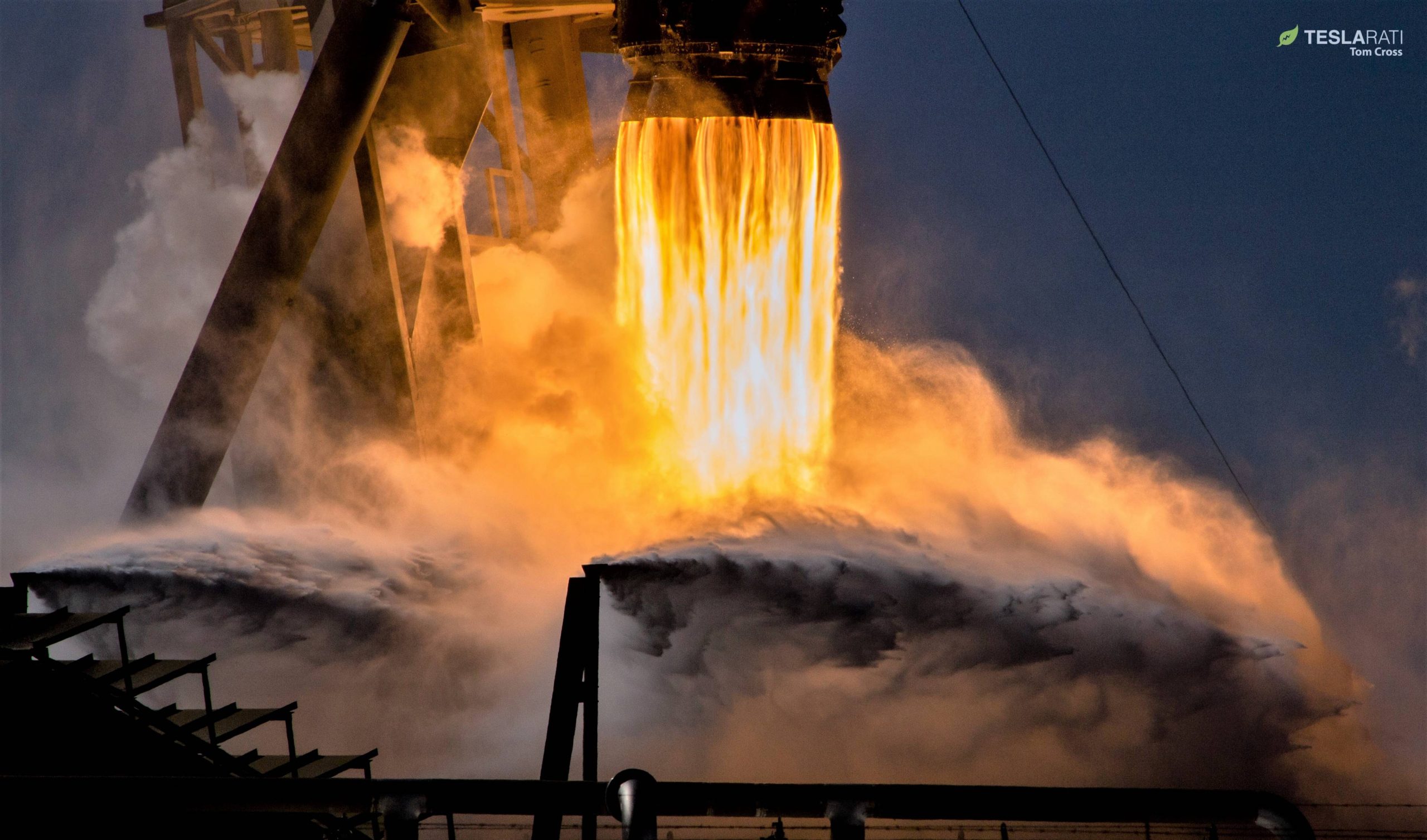
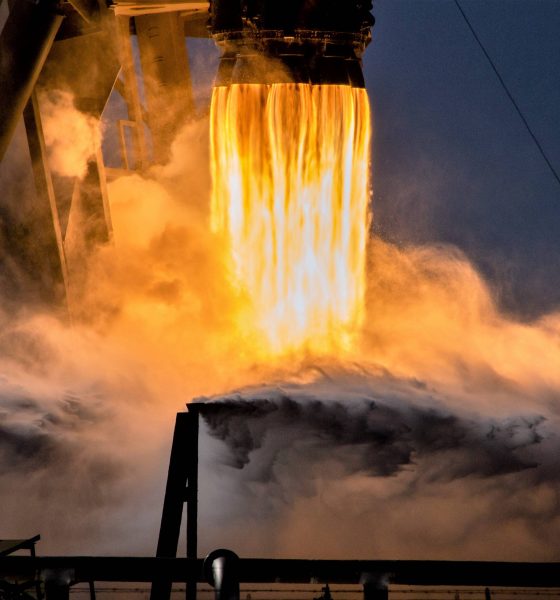
News
SpaceX’s Falcon 9 Block 5 set for first expendable launch with USAF satellite
SpaceX’s most significant US Air Force launch contract yet is set to kick off with a (NET) December 18 launch of the first of 10 next-gen GPS satellites, known as GPS III Space Vehicle 1 (SV01). Thus far, SpaceX has won all five competitive GPS III launch contracts offered thus far by the USAF and – depending on Falcon 9’s performance this launch – could win several more.
Aside from contract victories, SpaceX’s first GPS III launch will be marked by yet another first for the company’s May 2018-debuted Falcon 9 Block 5 rocket. This first is not quite as desirable, though: sans landing legs and titanium grid fins, the new Block 5 booster will be expended after launch and will make no attempt to land.
Via @USAirForce: First GPS III satellite, AKA “Vespucci,” encapsulated in fairing on 12/7 ahead of #SpaceX Falcon 9 launch NET 12/18. This is the company’s first GPS mission and is expendable, so there will be no booster recovery.
(📸: @LockheedMartin) pic.twitter.com/5aOWy1tI5k
— Emre Kelly (@EmreKelly) December 11, 2018
At this point in time, the first official confirmation that Falcon 9 will be flying in an expendable configuration was given in a handful of comments made by Vice President of Launch and Build Reliability Hans Koenigsmann at a Dec. 5 press conference. While focused primarily on the topic at hand (SpaceX’s successful launch of the CRS-16 Cargo Dragon), members of the press managed to squeeze in a few minimally related questions which Hans graciously answered. Speaking about SpaceX’s imminent GPS III launch, Hans noted that,
“GPS is not landing a booster. It doesn’t have the landing hardware, or the majority of the landing hardware. … I looked at the booster yesterday, it’s in great shape and getting integrated in the hangar.
- GPS III SV01 is encapsulated in Falcon 9’s fairing. (SpaceX)
- GPS III SV01 is encapsulated in Falcon 9’s fairing. (SpaceX)
- GPS III SV01 is encapsulated in Falcon 9’s fairing. (SpaceX)
- Spotted by local photographer Tom McCool on November 27th, this 39A-located Falcon 9 booster is the likeliest candidate for the first GPS III launch. (Tom McCool)
Hans also told members of the audience that he believed the expendable profile had stemmed from a customer (i.e. USAF) requirement based on a need for extra performance:
“Regarding GPS not landing, I think this is a customer requirement to have all the performance for the mission. It’s a challenging mission.“
While there was previously some doubt as to whether Falcon 9 was actually incapable of attempting a booster landing after launch, Mr. Koenigsmann’s offhand suggestion that GPS III launches would be “challenging mission[s]” makes it far more likely that the USAF’s given mission profile genuinely demands all of Falcon 9’s performance – not enough propellant will remain for Falcon 9 to attempt recovery. There is, however, still some ambiguity in Hans’ answer.
If Falcon 9 will be expended solely as a consequence of mission performance requirements despite the oddly low payload mass (~3800 kg) and comparatively low-energy orbit (~20,000 km), the only possible explanation for no attempted recovery would be the need for Falcon 9’s upper stage to perform a lengthy second burn after a long coast in orbit. However, the mission parameters the USAF shopped around for would have placed the GPS III satellite into an elliptical orbit of 1000 km by 20,181 km, an orbit that would unequivocally allow Falcon 9 to attempt a drone ship recovery.
- Falcon 9 B1047.2 is seen here conducting its second successful drone ship landing. (SpaceX)
- In a more perfect world, Falcon 9 would have been responsible for the rainbow. (SpaceX)
- Lockheed Martin’s GPS III (SV 01-10) satellite.
- A GPS III spacecraft spreads one of its solar array wings. (USAF)
The reasoning behind this is simple: SpaceX routinely recovers Falcon 9 boosters after far more energetic launches. For example, Falcon 9’s November 15th launch placed the 5300 kg Es’hail-2 satellite into an orbit of 200 km by 37,700 km, after which Falcon 9 B1047.2 performed its second successful landing on drone ship Of Course I Still Love You. A prevailing second theory for the expendable mission lies in the Air Force’s notoriously stodgy and sometimes irrational revulsion at the slightest hint of risk or change – to minimize perceived risk, the USAF could have thus demanded that SpaceX expend Falcon 9 regardless of whether it was capable of doing so.
For GPS III SV01, it appears that only time will tell whether the satellite ends up in an orbit that can properly explain the booster’s premature demise. Given that SpaceX has a full four additional GPS III launches currently on the books, it will be a shame to see a veritable fleet of Falcon 9 Block 5 boosters tossed into the sea after just a single launch each.
For prompt updates, on-the-ground perspectives, and unique glimpses of SpaceX’s rocket recovery fleet check out our brand new LaunchPad and LandingZone newsletters!

News
Swedish union rep pissed that Tesla is working around a postal blockade they started
Tesla Sweden is now using dozens of private residences as a way to obtain license plates for its vehicles.

Two years into their postal blockade, Swedish unions are outraged that Tesla is still able to provide its customers’ vehicles with valid plates through various clever workarounds.
Seko chairman Gabriella Lavecchia called it “embarrassing” that the world’s largest EV maker, owned by CEO Elon Musk, refuses to simply roll over and accept the unions’ demands.
Unions shocked Tesla won’t just roll over and surrender
The postal unions’ blockade began in November 2023 when Seko and IF Metall-linked unions stopped all mail to Tesla sites to force a collective agreement. License plates for Tesla vehicles instantly became the perfect pressure point, as noted in a Dagens Arbete report.
Tesla responded by implementing initiatives to work around the blockades. A recent investigation from Arbetet revealed that Tesla Sweden is now using dozens of private residences, including one employee’s parents’ house in Trångsund and a customer-relations staffer’s home in Vårby, as a way to obtain license plates for its vehicles.
Seko chairman Gabriella Lavecchia is not pleased that Tesla Sweden is working around the unions’ efforts yet again. “It is embarrassing that one of the world’s largest car companies, owned by one of the world’s richest people, has sunk this low,” she told the outlet. “Unfortunately, it is completely frivolous that such a large company conducts business in this way.”
Two years on and plates are still being received
The Swedish Transport Agency has confirmed Tesla is still using several different workarounds to overcome the unions’ blockades.
As noted by DA, Tesla Sweden previously used different addresses to receive its license plates. At one point, the electric vehicle maker used addresses for car care shops. Tesla Sweden reportedly used this strategy in Östermalm in Stockholm, as well as in Norrköping and Gothenburg.
Another strategy that Tesla Sweden reportedly implemented involved replacement plates being ordered by private individuals when vehicles change hands from Tesla to car buyers. There have also been cases where the police have reportedly issued temporary plates to Tesla vehicles.
News
Czech Deputy excited for Tesla FSD, hints at Transport Committee review
The ANO party lawmaker shared his thoughts about FSD in a post on social media platform X.
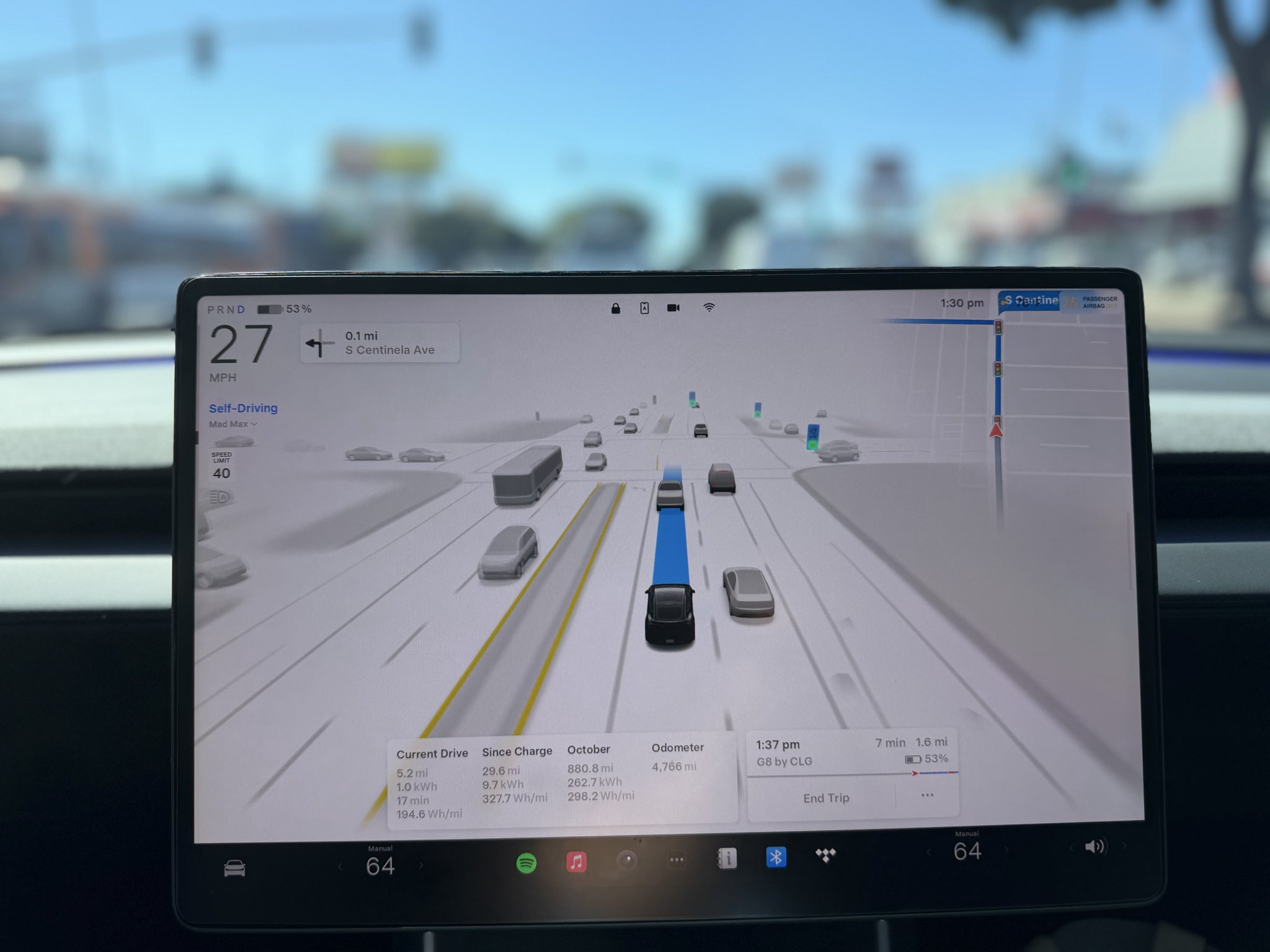
Martin Kolovratník, a Czech Republic Chamber of Deputies member, has expressed his excitement for Tesla’s Full Self-Driving (FSD) after an apparent constituent called for a quick approval for the advanced safety system.
The ANO party lawmaker, who drives both diesel and EV, shared his thoughts about the matter in a post on social media platform X.
The official’s initial statements
Kolovratník kicked off the exchange with a post outlining his coalition’s efforts to scrap highway toll exemptions for electric vehicles and plug-ins starting in 2027.
“Times have changed. Electric vehicles are no longer a fringe technology, but a full-fledged part of operations. And if someone uses the highway network, they should follow the same rules as everyone else. That’s the basis of fairness,” he wrote.
He emphasized equity over ideology, noting his personal mix of diesel and electric driving. “For this reason, there is no reason to continue favoring one technology at the expense of another… It’s not about ideology, it’s about equal conditions. That’s why we clearly agreed within the new coalition: the exemption for electric vehicles and plug-ins will end in 2027. The decision is predictable, understandable, and economically sound.”
Tesla FSD enthusiasm
The conversation pivoted to Tesla’s FSD when X user @robotinreallife, who seems to be one of the official’s constituents, replied that other matters are more important than ending highway exemptions for EVs.
“I’m happy to pay for the highway, but I have a question about a much more fundamental matter: The Netherlands will approve the operation of Tesla FSD in February 26, a technology that has been proven to reduce accidents. The Czech Republic has the option to immediately recognize this certification. Do you plan to support this step so that we don’t unnecessarily delay?” the X user asked.
Kolovratník responded promptly, sharing his own excitement for the upcoming rollout of FSD. “I know about it. I like it and it seems interesting to me. Once we set up the committees and subcommittees, we’ll open it right away in that transport one. Thanks for the tip, I’ll deliver the report,” the official noted in his reply on X.
Kolovratník’s nod to FSD hints at the system’s potentially smooth rollout to Czechia in the coming year. With the Netherlands possibly greenlighting FSD (Supervised) in early 2026, Kolovratník’s commitment could accelerate cross-border certification, boosting FSD’s foray into Europe by a notable margin.
News
Tesla Model 3 named New Zealand’s best passenger car of 2025
Tesla flipped the switch on Full Self-Driving (Supervised) in September, turning every Model 3 and Model Y into New Zealand’s most advanced production car overnight.

The refreshed Tesla Model 3 has won the DRIVEN Car Guide AA Insurance NZ Car of the Year 2025 award in the Passenger Car category, beating all traditional and electric rivals.
Judges praised the all-electric sedan’s driving dynamics, value-packed EV tech, and the game-changing addition of Full Self-Driving (Supervised) that went live in New Zealand this September.
Why the Model 3 clinched the crown
DRIVEN admitted they were late to the “Highland” party because the updated sedan arrived in New Zealand as a 2024 model, just before the new Model Y stole the headlines. Yet two things forced a re-evaluation this year.
First, experiencing the new Model Y reminded testers how many big upgrades originated in the Model 3, such as the smoother ride, quieter cabin, ventilated seats, rear touchscreen, and stalk-less minimalist interior. Second, and far more importantly, Tesla flipped the switch on Full Self-Driving (Supervised) in September, turning every Model 3 and Model Y into New Zealand’s most advanced production car overnight.
FSD changes everything for Kiwi buyers
The publication called the entry-level rear-wheel-drive version “good to drive and represents a lot of EV technology for the money,” but highlighted that FSD elevates it into another league. “Make no mistake, despite the ‘Supervised’ bit in the name that requires you to remain ready to take control, it’s autonomous and very capable in some surprisingly tricky scenarios,” the review stated.
At NZ$11,400, FSD is far from cheap, but Tesla also offers FSD (Supervised) on a $159 monthly subscription, making the tech accessible without the full upfront investment. That’s a game-changer, as it allows users to access the company’s most advanced system without forking over a huge amount of money.

